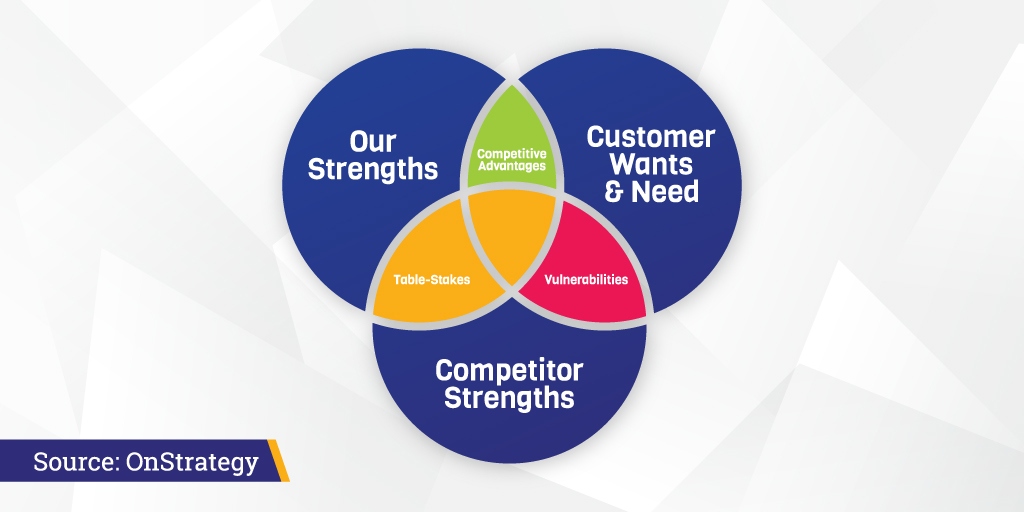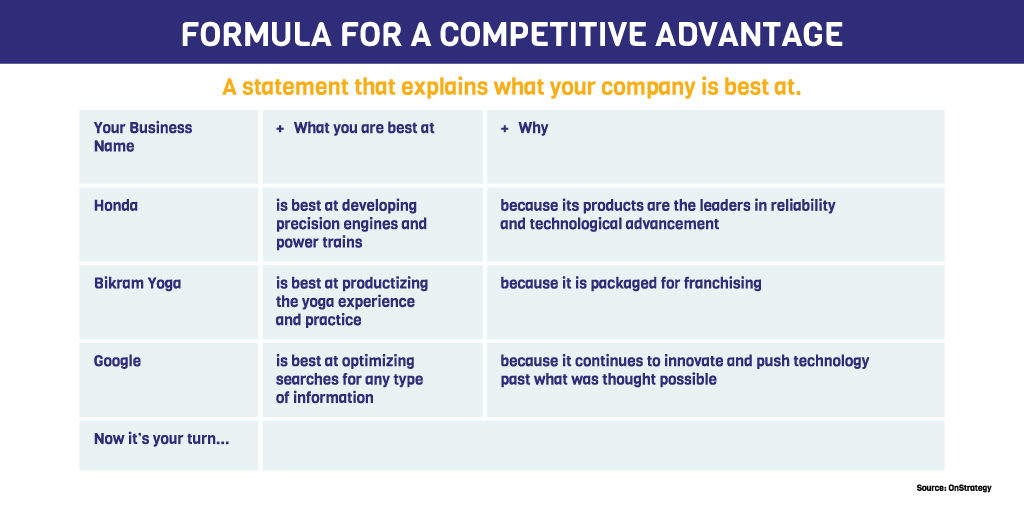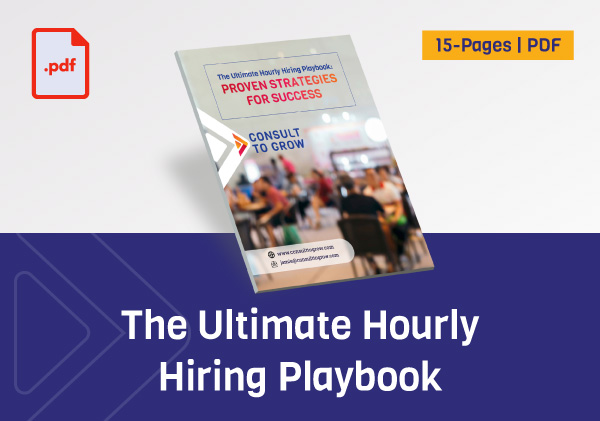
How to Lead and Succeed with Owning Multiple Locations
Owning multiple locations is often the most exciting milestone for a restaurant or retail owner, but it also comes with unique challenges. This post is
In the ever-evolving world of the restaurant industry, staying ahead of the competition is a constant challenge. Whether you’re a seasoned restaurateur or just starting your culinary journey, understanding and leveraging your restaurant’s competitive advantages is essential for long-term success. In this blog post, we will explore what a restaurant competitive advantage is, how to make it sustainable, the difference between strengths and competitive advantages, and how to identify them.

Your business’s core sustainable competitive advantage(s) is the unique and enduring strengths or attributes that set your business apart from its competitors and allow you to maintain a dominant position in the market over the long term.
Here are a few great examples:
Long-term winners in the marketplace know and protect what makes them unique. This advantage can manifest in various forms, including exceptional customer service, a signature dish, a prime location, or even a distinctive ambiance. Essentially, it’s the “X factor” that makes patrons choose your restaurant over others that can’t be easily duplicated by competitors.
Cost advantage
Cost advantage lets you distinguish your products by producing and offering them at a lower cost than your competitors while maintaining acceptable quality standards. You can attain cost advantage by constantly improving efficiency, refining and streamlining the production process, achieving economies of scale, or cutting costs in various areas. McDonald’s “Dollar Value Menu” is a good example of a cost advantage or Applebee’s recent return of the “Dollarrita.”
Differentiation advantage
Differentiation advantage involves offering unique products or services of superior quality, more features and benefits, or a stronger brand image, albeit at a premium price. Differentiation can help you build customer loyalty.
Focus Advantage
Focus advantage comes from targeting a specific market segment or a niche. By narrowing your focus to a particular customer group, you can customize your products or services to meet unique needs, solve specific problems and pain points of that group, and stand out from the competitors. It can improve customer loyalty and increase profit margins, provided the target market is big enough or the competition does not pose a significant threat.
Speed advantage
When you attain a speed advantage, you can be faster in product development, manufacturing, delivery, customer service, or bringing the products to the market. It enables your company to be more agile and respond more quickly to changes in the market than your competitors. For example, Velvet Taco’s weekly taco feature or any firm that excels at “limited time offers.”
Innovation advantage
Innovation allows you to develop new products and services or introduce new business models that disrupt existing markets or create new ones. Innovation advantage can help you stay ahead of competitors and create new opportunities for sustainable growth. For example, Sweetgreen’s focus on technology and automation.
Geographic advantage
Geographic advantage involves having a strategic location that gives you easier access to resources, suppliers, or customers. In fact, many of the dominant players in the restaurant industry are regional restaurant groups. Read: 10 Legendary Regional Fast-Food Chains You Must Try
Customer service advantage
A customer service advantage involves superior customer service and support. You can gain it by enabling faster response times, personalized support, diverse customer support channels, or better communication. Customer service advantage helps businesses build strong relationships with customers and create a loyal customer base.
Sustainability is the key to ensuring your competitive advantage remains effective over time. Here are some strategies to make your competitive advantage long-lasting:
While strengths are an essential component of your restaurant’s competitive advantage, they are not the same. Strengths are the internal attributes and resources that your restaurant possesses. These could include a skilled chef, a loyal customer base, a convenient location, or a unique recipe. Competitive advantages, on the other hand, are strengths that you have leveraged to outperform your competition. For example, having a renowned chef (a strength) becomes a competitive advantage when you market the chef’s specialties to draw customers away from other dining options. See the following venn diagram:

Identifying your competitive advantages is a critical first step in developing a winning strategy. Here’s how to do it:
OnStrategy offers the following formula for determining your competitive advantages:
Your Business + What You Are Best At + Why = Competitive Advantage

I also like Marty Neumeier’s Onliness Statement approach. “When everybody zigs, zag,” wrote Marty Neumeier in the appropriately named Zag — The #1 Strategy of High-Performance Brands. Zag is a book about brand strategy and differentiation. It’s short, pithy, and decidedly practical — structured as it is around a 17-step process designed to help you “find your Zag” and differentiate your offering. At the heart of this process is Neumeier’s onliness statement (see above) — thusly named because it’s a single sentence with which to describe how and why your offering is different from that of the competition.
Identifying and nurturing your restaurant’s competitive advantages is an ongoing process that requires dedication and innovation. It’s what will keep your establishment not only surviving but thriving in a competitive culinary landscape. Stay true to your unique offerings, continually adapt, and provide a consistent and exceptional experience, and you’ll be well on your way to being competition-proof.
Once you’ve identified your restaurant’s competitive advantages, the next step is to nurture and develop them. Here are some key strategies to help you maintain and enhance your unique selling points:
Remember, nurturing your competitive advantages is an ongoing process. Stay attentive to changing trends and customer preferences, and be flexible in your approach. By consistently investing in what sets your restaurant apart, you’ll ensure that your competitive advantages remain strong and attractive to your target audience.
Consult to Grow® provides various tools and services to help you improve your operational performance as you scale and grow your business. We can expertly assess your scalability, develop tactical plans, facilitate planning, and more. Ready to get started?

Owning multiple locations is often the most exciting milestone for a restaurant or retail owner, but it also comes with unique challenges. This post is

Is the weight of leadership or ownership pressing down on you? Do you wake up each day drained, overwhelmed, and uninspired? Maybe you are struggling

“The Ultimate Hourly Hiring Playbook” is designed for the dynamic demands of the service industry. This comprehensive guide is your essential resource for refining your